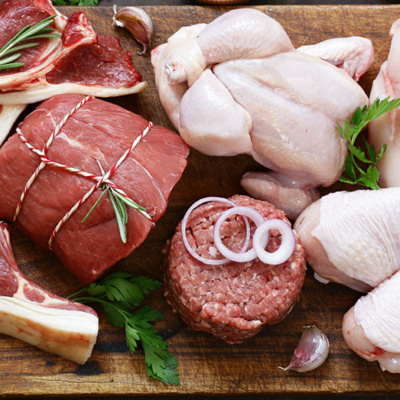top of mind news
- Covid Surge Brings More Safety Rules For Restaurants, Harsher Penalties For Disobeying
- The Reason Meat At Restaurants Is Going To Be Way More Expensive
- Governments Have an Obligation to Close Restaurants After Workers Test Positive for COVID-19
- Want to Restructure Your Restaurant Lease? You’re Not Alone
- 5 Top Dining-Out Trends for a Post-Pandemic Society
Poultry
 For the week ending June 13th, chicken slaughter was 3.6% smaller than the year prior, but heavier birds left RTC production 0.5% larger than a year ago. While there may be another two weeks of tighter chicken harvests, estimates remain for production to expand into July. Buying interest across the wholesale chicken sector remains largely mixed, with breast meat and tenders finding modest support while the wings and dark meat markets have been mostly steady to lower. Look for demand however to emerge across the wing markets as sports come back online from mid-July well into August but worries over the continued spread of COVID-19 could stymie that reopening.
For the week ending June 13th, chicken slaughter was 3.6% smaller than the year prior, but heavier birds left RTC production 0.5% larger than a year ago. While there may be another two weeks of tighter chicken harvests, estimates remain for production to expand into July. Buying interest across the wholesale chicken sector remains largely mixed, with breast meat and tenders finding modest support while the wings and dark meat markets have been mostly steady to lower. Look for demand however to emerge across the wing markets as sports come back online from mid-July well into August but worries over the continued spread of COVID-19 could stymie that reopening.
Beef
Despite coming in 2k head smaller than the week prior, last week’s cattle harvest hosted a couple of days at 120k head and continues to point towards a peak harvest potential in the 660k to 670k head area should packers need to run more aggressively. Heavier carcasses continue to equal more available beef, though, and wholesale beef prices continue to fade entering the summer. Yet, the end meats may bottom soon, but additional downside potential is likely for the ribs, and many of the loin cuts. The beef 50s are leaking lower but support should emerge in the $70’s area. Lean beef trim prices are likely to ease.
Pork
Weekly hog harvests last week jumped 5.4% over a year ago and are now in line with the year-over-year gains noted throughout 2019 and into early 2020. Hog supplies are abundant so anticipated pork production to remain robust throughout the summer. Wholesale pork prices have been struggling but look for a floor in the markets as prices are at attractive value levels both, domestically, as well as from an export perspective. Ham prices likely have additional upside potential, but pork bellies may be choppy to slightly higher going into the summer.
THE SEA
Seafood
Lackluster food service demand continues to weigh on the seafood markets. That includes salmon with the import filet market well below the previous year. This is despite U.S. salmon imports during April falling 12.8% below 2019. Rising COVID-19 cases in several states could continue to dampen the restaurant industry recovery in the coming weeks. Thus, fairly attractive salmon prices are anticipated to persist into July.
THE GARDEN
Produce
The lettuce markets have firmed as supplies tighten. The lettuce harvest is expected to remain subpar this week which could underpin prices. The extension of the government food box program could be supportive as well. Further, history suggests that the iceberg lettuce market could remain firm in the near term. The five-year average move for the iceberg lettuce market during the next three weeks is an increase of 3.2%. Larger sized Idaho russet potato supplies remain seasonally limited. Firm potato prices are likely to persist into the summer.
THE KITCHEN SINK
Dairy
CME cheese block and barrel prices weakened since last week but remain historically high. Butter prices softened as well. Per the USDA, May U.S. milk production was 1.1% smaller than last year due to a .4% bigger cow herd and a 1.5% decline in milk-per-cow yields. The milk-per-cow yield drop was the largest for any month in the last 20 years due to low prices impelling farmers to lessen milk efficiency. But, quickly increasing margins since then should boost milk output this fall and into 2021. The cheese markets are due for a correction lower. The butter markets usually find support during the summer.
Grains
Food oil prices have firmed as of late. Better economic conditions in Asia is encouraging imports and the ramp of the restaurant industry in the U.S. has encouraged domestic use. Limited world food oil supplies could underpin the markets into the summer. But further price gains in the U.S. are not likely to be substantial.
Oil
Nearby WTI crude oil futures on Friday set the highest weekly close in 15 weeks. Despite the continued spread of COVID-19, economic activity is rising as consumers become more familiar with the virus. But there is price resistance at $41.05.












